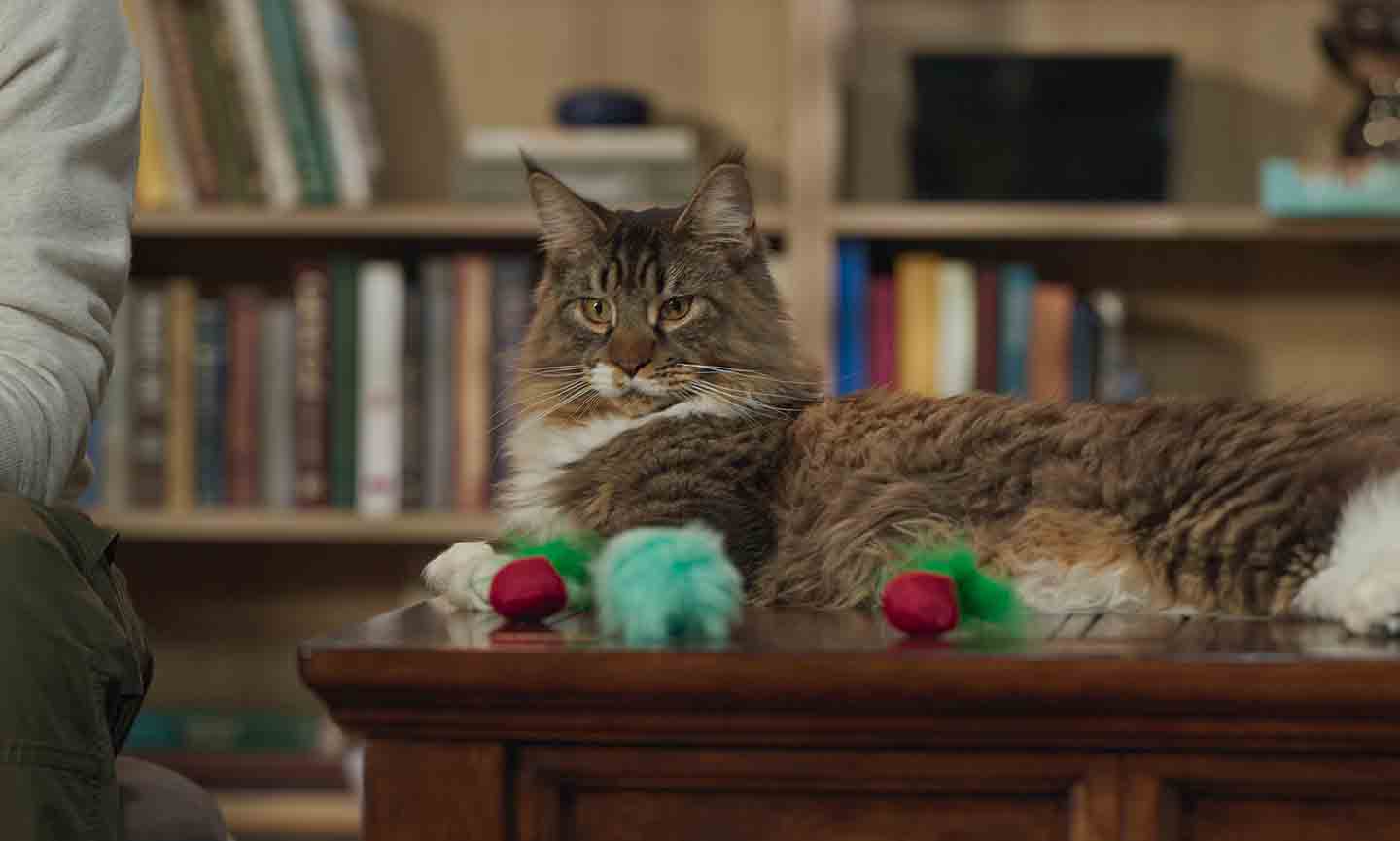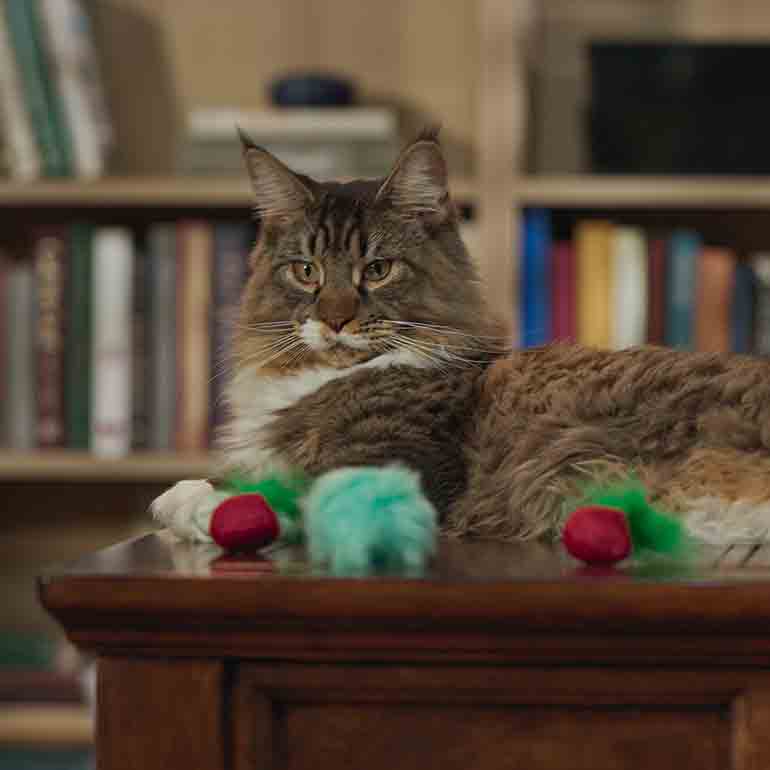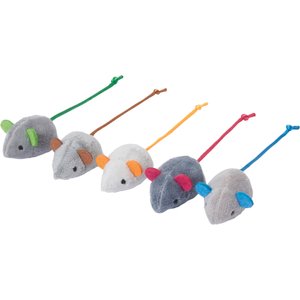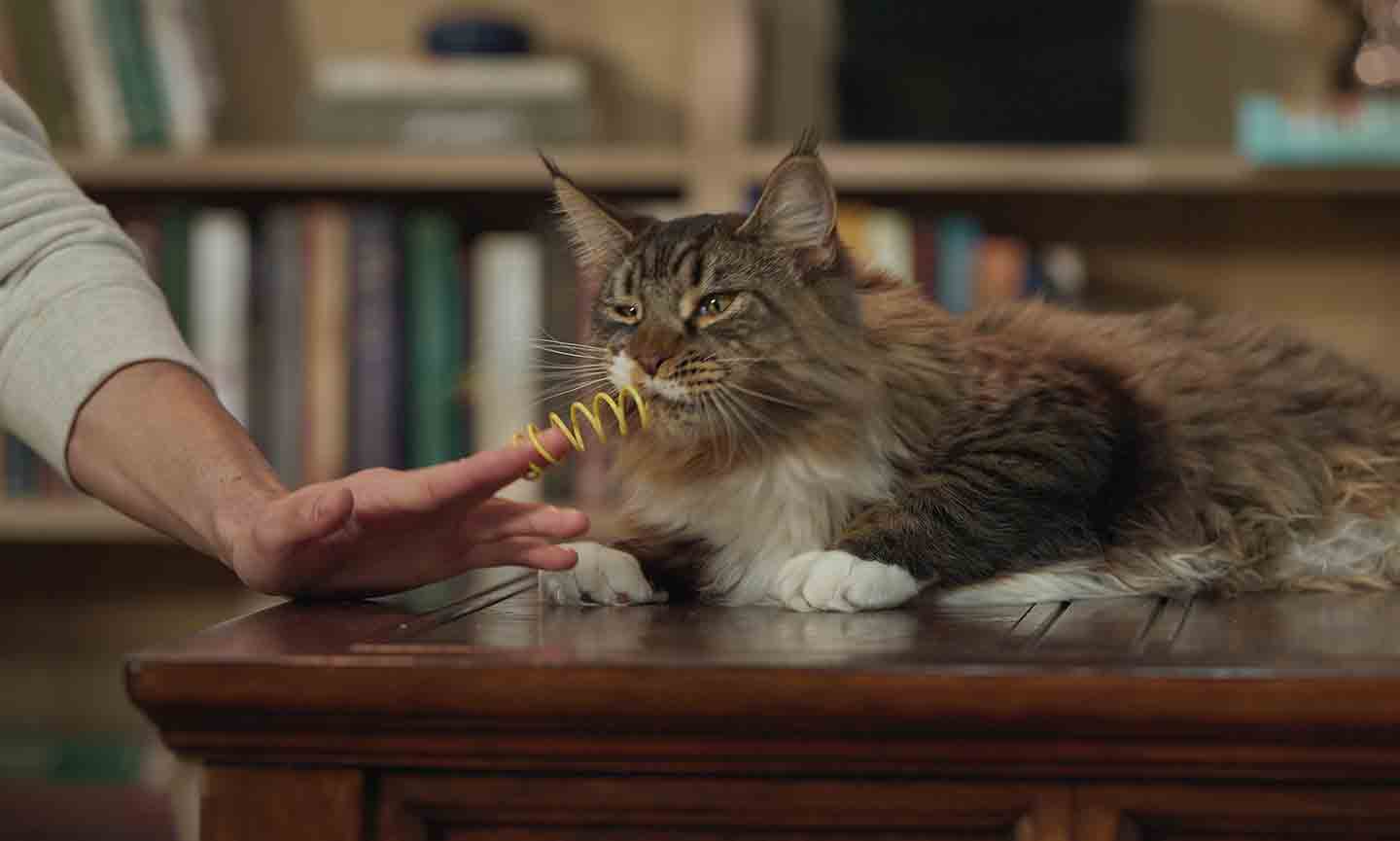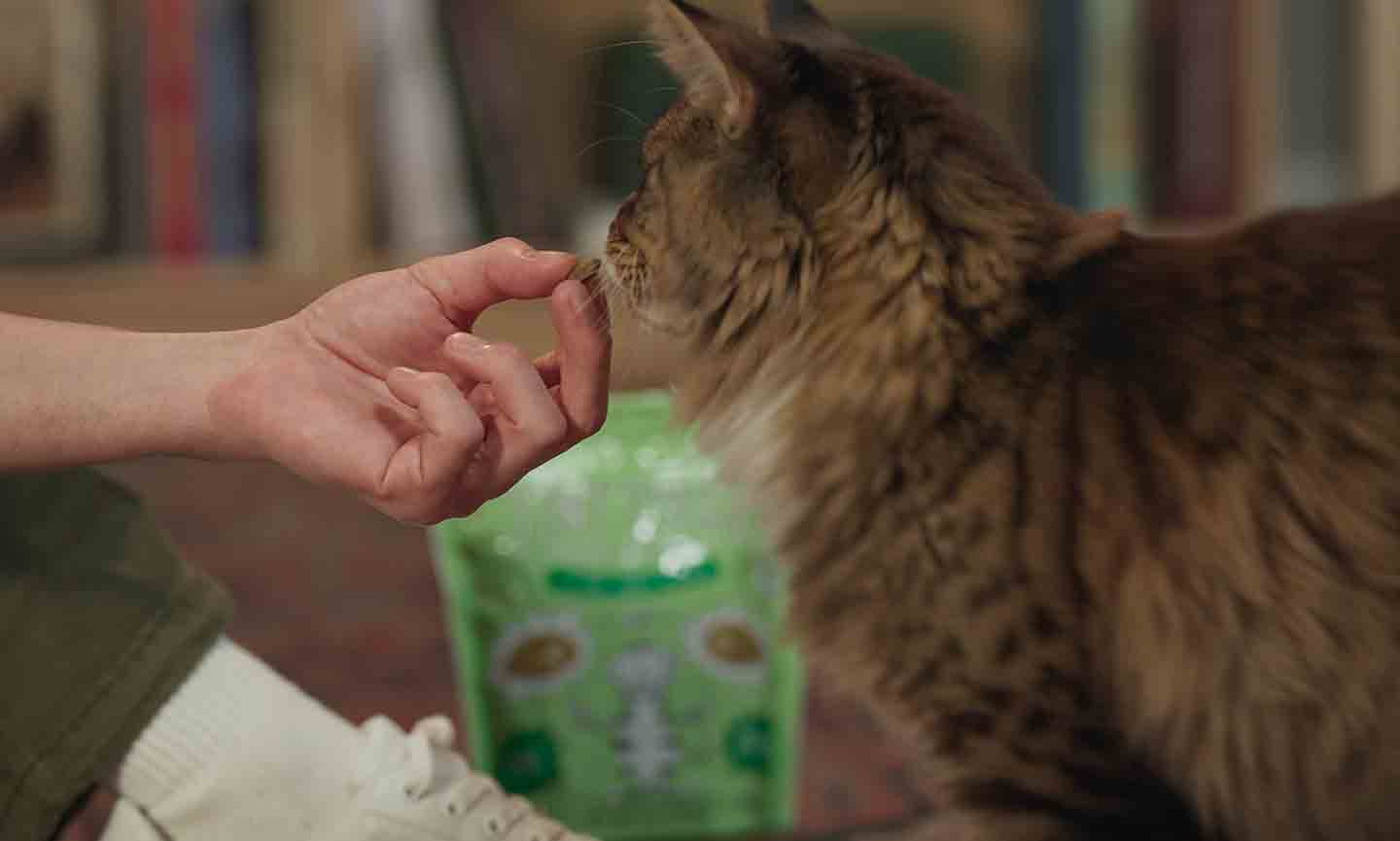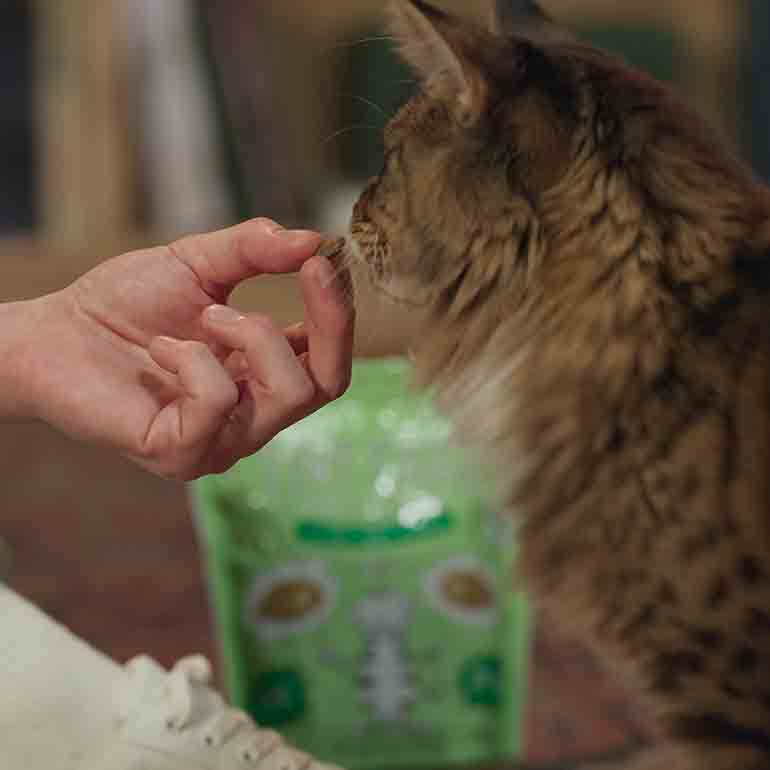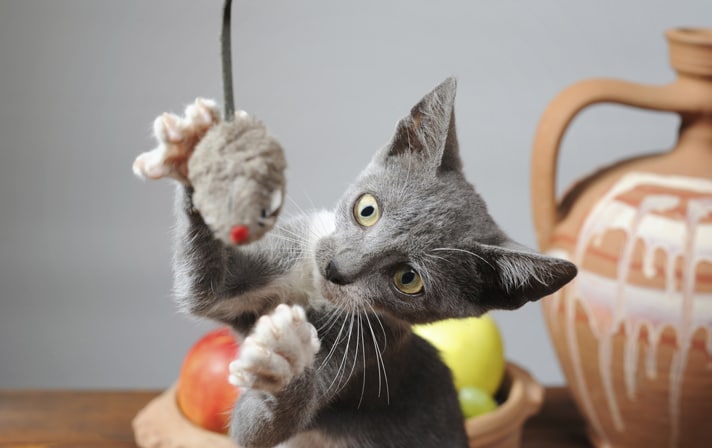Cats have a reputation for doing whatever they want, whenever they want, without much regard for their pet parents' requests. It’s true—they’ve got an independent spirit that puts them in a class of their own. That said, your sweet feline is mega smart and can likely pick up a few cool cat tricks, like giving you a (very adorable) high five, coming to you when their name is called and even playing a game of fetch.
All it takes is a little patience and determination on your end—and some tasty cat treats always help. We reached out to the experts about making fetch a part of your kitty’s playtime.
In This Guide
How To Teach a Cat to Fetch: Step by Step
1Pick Out a Desirable Cat Toy
2Play With the Toy in Front of Your Cat
Go in for some fun playtime with your selected toy. Experiment a bit to see what captures your kitty’s attention. You can:
- Wave it in front of your cat
- Roll it on the ground
- Toss it up in the air
- Play a little tug-of-war if possible
Anything you can do to capture your cat’s attention is a win! The goal is to make this toy seem like the most interesting thing in the world and to get your cat excited about it. The more intrigued they are, the more apt they are to chase it.
3 Toss the Toy a Short Distance
4 Encourage Retrieval
Once your cat has the hang of chasing after the toy you throw, encourage them to bring it back. You can do this by tossing their toy and staying in place versus going to them and the toy’s new location.
After they go to the toy, use your chosen verbal cue once they have the object in their mouth or in their paws to encourage the behavior. Then call out their name gently and happily. Have a treat in hand to help encourage them to head back to you. If your cat fetches the toy (aka runs after it, picks it up and brings it back), bring on the treats and praise!
5 Keep Practicing
As is the case with any sort of training, it’s important for cat parents to stay the course and continue practicing this skill with their kitty. This process might go quickly, but it can take weeks or months rather than hours. (Sorry!)
Over time, your furry feline will get better at learning how to fetch, particularly if your cat loves the game! Try not to labor it, though—you don’t want to bore them or discourage them from playing in the future. A few minutes of practice at a time is good—around 10, or less if your cat seems uninterested earlier than that.
Helpful Cat Training Tips
As aloof as cats may seem, training them is very possible. Along with teaching them fetch, you can teach them how to sit, give a high five, spin, jump and so much more. Dr. Savageau reminds us that teaching cats tricks, however, isn’t quite the same as training a dog.
- Focus on rewarding them. “Cats are generally more independent and may not have the same desire to please their pet parents as dogs do,” Dr. Savageau says. In that sense, they’re simply not as motivated. Use pleasurable rewards, like treats and under-the-chin scratches, to tempt them.
- Keep it short. Cats can have shorter attention spans, so training sessions might need to be brief and engaging to keep them interested. Once they lose interest, it’s time to move on and pick up the game another day.
- Try clicker training. “Clicker training can be an effective way to train cats,” notes Dr. Savageau. “Use the clicker to mark the desired behavior instantly and follow it up with a treat.” Try the Frisco Pet Training Clicker with Wrist Band.
- Stay the course. Generally speaking, cats take longer to train compared to dogs. It’s not that cats aren’t as smart as canines—any cat would beg to differ! Rather, they’re sometimes just not as interested in doing tricks. Be patient and consistent with your training efforts.
Why Does My Cat Play Fetch? Is It Normal?
So you somehow found a shortcut to teaching your cat to play fetch—and you didn’t even have to put hours of training time into it! Though we don’t usually associate a game of fetch with cats, it’s not unusual for them to pick up this fun cat behavior even without practice or deliberate training efforts.
“Some cats naturally exhibit fetching behavior, and it’s not uncommon for pet parents to unintentionally encourage this behavior through positive reinforcement,” Dr. Savageau explains. “It can be considered relatively normal for a cat to fetch, especially if they seem to enjoy the activity.”
Basically, somewhere along the line they became enticed with a toy, which you either tossed or they simply brought to you while you were minding your own business. And they eventually learned that if they bring the toy back to you (maybe meowing very cutely along the way!) that you might just hurl it into the air for them to chase after. And if they brought it back again? Well, the game might just continue some more.
Their exact thoughts? “What fun!” Congratulations on having a very smart and playful kitty.
Training cats is just one of the many joys of being a cat parent, and teaching them how to play a game of fetch can encourage bonding and exciting playtime. Of course, there are some cats who just aren’t as into doing cat tricks or playing fetch as others, and that’s completely OK!
If that’s the case for your cute little meow factory, then don’t try to force this trick to happen. Instead, find a different way to engage with them, like through snuggles, walks, hide and seek or laser tag.
Expert input for this story provided by Dr. Nicole Savageau, VMD, a veterinarian with The Vets of Austin, Texas.
More Cat Training
Share:

